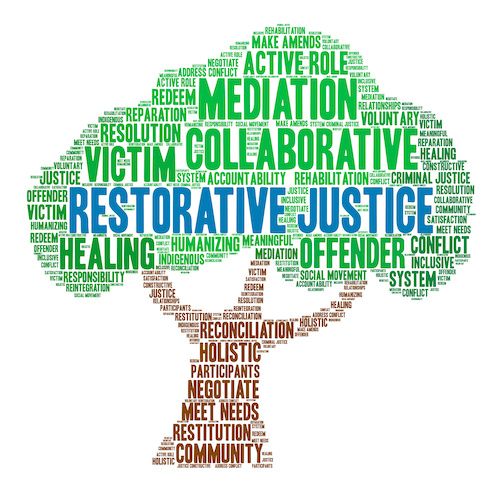Restorative Justice (RJ) is a transformative approach to addressing crime and conflict that emphasizes healing, accountability, and community restoration. Unlike traditional justice systems focused on punishment, restorative justice seeks to repair the harm caused by wrongdoing by fostering dialogue between the affected parties.
This approach is rooted in the belief that crime is not just a violation of laws but a breach of relationships. Restorative justice acknowledges the needs of victims, offenders, and communities, offering a path to resolution that promotes understanding, empathy, and meaningful change.
How Restorative Justice Works
The restorative justice process involves facilitated meetings, often referred to as restorative circles or conferences. Here, victims, offenders, and sometimes community members discuss the impact of the wrongdoing, explore its root causes, and collaborate on ways to make amends.
Key Principles of Restorative Justice:
- Voluntary Participation: All parties must agree to engage in the process.
- Active Accountability: Offenders take responsibility for their actions and commit to making things right.
- Focus on Repair: The process prioritizes healing over punishment, aiming to rebuild trust and repair harm.
Benefits of Restorative Justice
- Empowering Victims:
Victims are given a voice and an active role in seeking justice, which can help them regain a sense of control and closure. - Reducing Recidivism:
Offenders who participate in restorative justice are less likely to reoffend, as they gain a deeper understanding of the consequences of their actions. - Fostering Community Healing:
By involving the community, restorative justice promotes unity and creates a supportive environment for resolution. - Cost-Effectiveness:
Restorative justice can be less expensive than traditional court systems, as it often resolves issues faster and avoids prolonged litigation.
Applications of Restorative Justice
Restorative justice can be applied in various settings:
- Criminal Justice System: As an alternative or complement to incarceration, offering offenders a chance to make amends directly.
- Schools: To address bullying, fights, or rule violations, fostering accountability and a sense of community.
- Workplaces: Resolving interpersonal conflicts and creating a more harmonious work environment.
- Family and Community Disputes: Helping families or neighbors rebuild trust and mend relationships.
Challenges and Limitations
While restorative justice has proven effective, it is not without challenges. Some cases may involve power imbalances or severe trauma, making direct dialogue difficult. Moreover, it requires skilled facilitators to ensure the process is fair, respectful, and productive.
Despite these challenges, restorative justice remains a powerful tool for creating a more compassionate and equitable approach to conflict resolution.
Conclusion
Restorative justice is a forward-thinking solution that prioritizes healing over punishment, offering all parties a chance to move forward with dignity. By fostering dialogue and accountability, it builds bridges between people and communities, paving the way for lasting peace.
Interested in exploring restorative justice for your legal or personal needs? Contact Aireen Grey Legal for expert guidance and compassionate legal services tailored to your situation.

